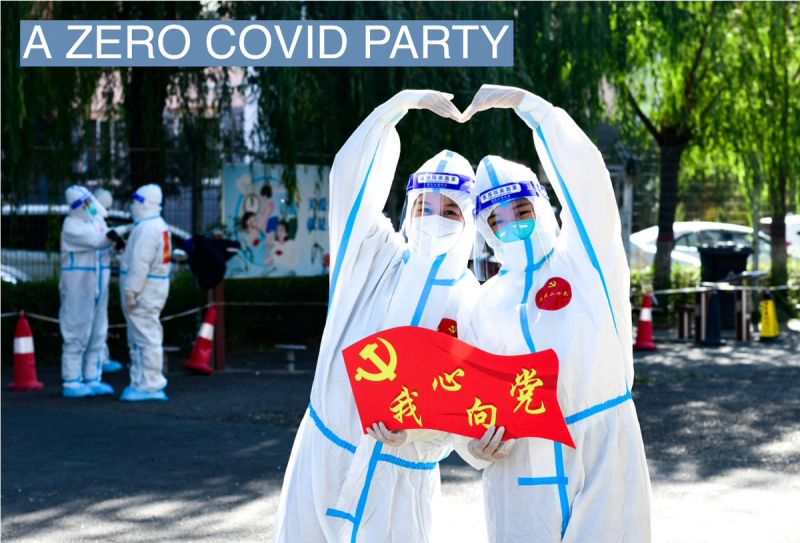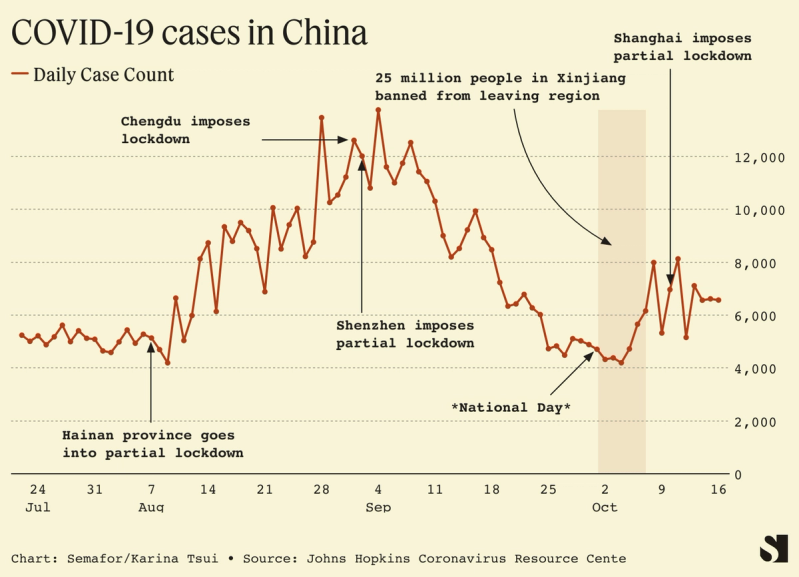The News
Chinese leader Xi Jinping has vowed to keep “zero-COVID” going, utilizing strict lockdowns and stringent nationwide testing to keep COVID-19 under control. Case numbers are not dropping, though.

In this article:
Know More
Speaking to more than 2,000 delegates at the start of the Communist Party’s five-yearly congress over the weekend, Xi touted China’s “zero-COVID” policy as a success. The strategy “had put the lives of Chinese people above all else,” Xi said, and had attracted “international acclaim.”
China’s zero-COVID policy was drafted in 2020, during the initial coronavirus outbreak in Wuhan. Under its rules, positive cases and those deemed close contacts to isolate — sometimes in solitary confinement. Where outbreaks were more serious, entire cities, counties, and provinces would “lock down” and the durations would vary. This year, Shanghai was locked down for two months.
Measures proved effective for a while. Since 2020, case numbers have waned due to natural immunity or vaccinations — but China’s zero-COVID policy still persists.
In the lead up to this week’s Party congress, measures to enforce the policy have intensified, with only a few dozen cases spurring partial or full city-wide lockdowns, as authorities impose frequent and widespread testing. Most recently, Chengdu, the capital of Sichuan province, forced its 21 million residents to stay home for two weeks after a few hundred cases were detected.

These tactics have not, however, yielded a reduction in cases. In some instances, lockdowns have caused spikes in the number of cases: In the central Chinese city of Xi’an, where 20 cases were detected Friday, 14 came from epidemic prevention workers managing quarantine sites.
As of last week, nearly 200 million people in China are under some form of lockdown, according to The New York Times. In Shanghai, people who have been exposed to COVID will have their buildings shut down, and will be required to present two negative PCR tests in 48 hours before they are free to leave their homes.
Complaints over the harsh measures rarely slip into public discourse, with Chinese social media sites heavily surveilled and censored, and a vast security apparatus curtailing public protest. But last Friday, one took place anyway. In Beijing, where security is tighter than ever because of the Party congress, a banner with a series of protest slogans hung across the side of a bridge: “No PCR tests, we want food,” “No cultural revolution, we want reform,” “No lockdown, we want freedom,” “Not a leader, we want votes,” “Not lies, we want dignity,” “Not slaves, we are citizens.”
The View From Hong Kong
Much like the mainland, Hong Kong was practically shut to the rest of the world from 2020 onwards, with incoming travelers required to quarantine in a hotel room for up to three weeks. The population was slow to embrace COVID vaccines, until the city saw a sharp uptick in cases early this year. Public places such as schools, swimming pools, restaurants, and bars were also subject to sporadic closures, with businesses suffering as a result. But last month, the city’s new chief executive John Lee announced that the city would scrap quarantine measures and open up for good.
Notable
A recent investigation by the Australian broadcaster ABC showed how China has exported its zero-COVID policy abroad, to places where Chinese companies are undertaking Belt and Road infrastructure projects. In Karachi, Pakistan, hundreds of workers have been forced to work and remain in a billion-dollar power plant since March 2020.

